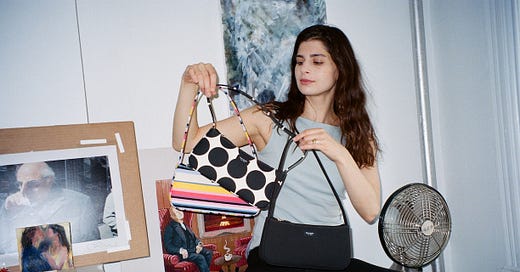A ‘90s Kate Spade New York Bag Makes a Comeback
A deep dive! Urban Outfitters collaborates with the brand that took over young women's closets.
A collaboration between Urban Outfitters and Kate Spade New York…this post is brought to you by both brands. A fascinating partnership! And guess what? I was able to go into the archives and talk about counterfeiting, the genius behind the tiny label placement, a…





